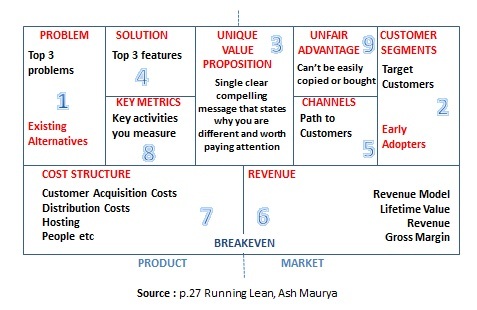Donncha Hughes's Blog: Blog of Donncha Hughes, page 4
June 13, 2020
Organise GMIT New Frontiers One 2 Ones with Phase 1 Participants
As part of the New Frontiers Phase 1 programme in GMIT iHubs, Donncha will virtually meet participants for a One 2 One session to review their draft applications prior to final application on August 6th, 2020 New Frontiers Phase 2 Application – One 2 One As discussed at our workshop on Friday 19th June, there...
The post Organise GMIT New Frontiers One 2 Ones with Phase 1 Participants appeared first on Donncha Hughes, Business Trainer, Advisor & Mentor. Thanks for signing up to my feed regards donncha p.s why not also check out my other website www.startupwebtraining.com
March 19, 2020
Writing Business Plan Executive Summary – format, example and guidance
I write business plans for some startup and SME clients. I review business plans for Enterprise Agencies. I also provide training on business plans. A question I am often asked is, ‘what content goes into a business plan’, with the follow up being, ‘how much information should be included in an Executive Summary‘. Most people...
The post Writing Business Plan Executive Summary – format, example and guidance appeared first on Donncha Hughes, Business Trainer, Advisor & Mentor. Thanks for signing up to my feed regards donncha p.s why not also check out my other website www.startupwebtraining.com
Writing Business Plan Executive Summary – template and guidance
I write business plans for some startup and SME clients. I review business plans for Enterprise Agencies. I also provide training on business plans. A question I am often asked is, ‘what content goes into a business plan’, with the follow up being, ‘how much information should be included in an Executive Summary‘. Most people are wondering about what should be included and more importantly what should just be filtered out. This blog article will address this particular issue of writing a ‘compelling Executive Summary’.
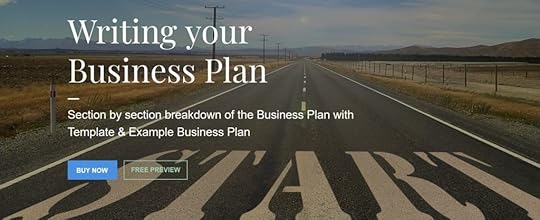
My online Programme
Business summaries are not actually summaries
I read a super post entitled, ‘The Structure of a Perfect Pitch‘ by Dave Bailey, which points out that startups are regularly asked to provide short summaries in profiles, applications, websites, emails, social media, partners, press, pitches and of course in business plans. His key point is that a Business Summary is not really a summary at all…
When the whole team is working night and day on complex problems, how are you supposed to sum up everything your company does?
Dave Bailey, Entrepreneur, Early Stage Investor and Coach
The truth is you can’t. And you shouldn’t.
The goal isn’t to compress everything your company does, or list every benefit you offer your customers. A great summary is sales copy that effectively positions your company to your audience.
Write Your Summary First
Business plans take time to write. I like to prepare a PowerPoint presentation with key bullets on each of the headings in the business plan – one (or two) slide(s) for Problem, Solution, Marketing Opportunity, Customer, Marketing, Operations and Finance.
I then suggest writing your initial Executive Summary. There are probably 5 or 6 key pieces of information that you want to get across to the reader. You know what those are before you start. So go ahead and write your summary or story of your business – what you want the reader to know, think and feel.
 Tell the story of your Business
Tell the story of your Business You might not have the financials done at that stage so use placeholders for the important figures like turnover, net profit %, margins and other KPIs like markets, customers and product – all of which can be added later. When you have finished your business plan you can go back to finalise the Executive Summary. This approach will make sure that the Executive Summary has a nice flow and is not a series of disjointed trains of thought as if written by different people at different times.
BTW, I highly recommend that you don’t ‘copy paste’ from other documents. Those were written for other purposes. Start from a blank screen and write to address the essence of each issue. This will ensure that the message is concise but comprehensive. You can always check other documents later for consistency particularly if you have phrased something in a particular way that works really well.
Format for 1 Minute Introduction
There is a superb commercialisation workbook called, ‘So What, Who Cares, Why You’ by Wendy Kennedy. I like to use the title as a prompt for a concise 1-minute introduction that participants can use at training sessions. So 20 seconds on so what, 20 seconds on who cares, and 20 seconds on why you.
So What
What is the problem you are solving and what does solution involve from the customer perspective (try to mention pricing) Who cares
Who is the customer (how big a market does this represent ie quantify) Why You
Skills, qualifications of the promoter (relevance to opportunity = story) key team.
The objective is not to explain everything about your business but ensure some understanding and hopefully elicit some excitement from the recipient. The goal is to start a conversation – these begin with questions (avoiding the polite nod).
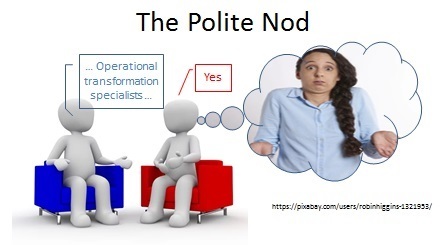 Responding “Yes” but really doesn’t understand what you are saying.
Responding “Yes” but really doesn’t understand what you are saying. So What, Who Cares, Why You are core elements of an Executive Summary as they are the key questions that an interested person will want and need to know about your business. I will outline my format for an Executive Summary shortly but first I want to highlight some key points on business plans from Art of the Start by Guy Kawasaki, a book that I read shortly after it was first published in 2004 [a classic that I have read on 3 separate occasions. BTW, the updated and revised (2015) Art of the Start 2.0 was not as groundbreaking for me].
The Art of Writing a Business Plan
This is the title of Chapter 4 of Art of the Start – the original book. The author is of the opinion that the business plan is the modern-day equivalent of the Holy Grail.
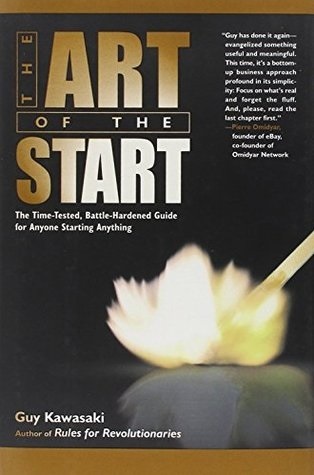
It is supposed to satisfy everyone (investors, directors, founders, and managers) and induce magical effects on those who partake of it – specifically, the irresistible urge to write a check. Also, like the Holy Grail, the business plan remains largely unattainable and mythological. Most experts won’t agree, but a busines plan is of limite usefulness for a startup because entrepreneurs base so much of their plans on assumptions, ‘visions’ and unknows. ….. However, many investors, recruits, potetial board members and internal decison makers do expect a business plan and won’t proceed without one. Plus, writing a business plan does have the benefit of forcing a team to work together to formalise intentions. So write a plan, and write it well, but don’t convince yourself it’s the Holy Grail. Organisations are successful because of good implementation, not good business plans.
Chapter 4, Art of the Start – The Time Tested, Battle Hardened Guide for Anyone Starting Anything
Guy’s advice is to ‘Pitch then Plan’ on basis that a good business plan is a detailed version of a pitch – as opposed to a pitch being a distilled version of a business plan. The slides essential for a good pitch for investors were outlined:
Title SlideProblem Solution Business Model Underlying Magic Marketing and salesCompetition Management team Financial projections and key metricsCurrent status, accomplishments to date, timeline, and use of funds.
He adds that the majority of the business plan writing effort should be devoted to getting the executive summary right.
A good Executive Summary is a concise and clear description of the problem you solve, how you solve it, your busines model, and the underlying magic of your product or service. It is the most important part of your business plan because it will determine whether people will read the rest of the document. If the Executive Summary fails to spark interest, then the game is lost before it even begins.
Chapter 4, Art of the Start – The Time Tested, Battle Hardened Guide for Anyone Starting Anything
My ‘template’ for the Executive Summary
Before presenting my template there are 3 key points to consider:
I generally like to keep the Executive Summary to two pages. I think it is important to start with a short paragraph of 3 lines which details the value proposition referencing the problem being solved, the customer and how the solution is better than the competition. The reader will want to know as much as possible about the business immediately to put their mind at ease so this (long) sentence is critical in setting up the story of the business with all pertinent details to be added in summary format in these first two pages. I will then detail the business using headings in bold containing one short paragraph per topic. I am also inclined to include a graphic in the Executive Summary which summaries the product and/or business model. It is nice to add colour to the document (personally find them more pleasant to read). The finances are critical and must be given sufficient prominence. Turnover, overheads, margin, pricing and key metrics such as the number of customers, average value of customers, growth levels and customer acquisition costs. If for instance, the business is seeking to raise money, I would declare that in your very first paragraph. It would then be discussed properly in the Executive Summary (and in even greater detail in the main text of the plan – would be treated as a theme running through the document).
Information to present and in what order?
I like to frame my Executive Summary with six components.
Open a business plan with a summary of the value proposition. The first paragraph of circa 3 lines will summarise the customer, job to be done/ finished story benefit and solution.
The Executive Summary will form the basis of a 2-page Investor Teaser which may be distributed in advance of a full business plan perhaps with a slide deck.
Business planning is indispensable
I would certainly agree with Guy Kawasaki when he says that “for most entrepreneurs, the business plan is one of the least important factors in raising money. If an investor is leaning towards a positive decision, then the business plan only reinforces this inkling. It probably wasn’t responsible for the positive position itself. If the investor is leaning towards a negative decision, then it’s unlikely that the plan will change his mind. He lists 4 realistic reasons to write a business plan.
In the latter due-diligence stage of courting an investor, the investor will ask for one. It’s part of the game – a business plan has to be ‘in the file’ Writing a plan forces a founding team to work together. With any luck, this will help generate a strong, cohesive team. You might even figure out who you don’t want to work with. Writing a business plan makes the team consider issues that it had overlooked or glossed over in its euphoria – for example, developing a customer service policy. Finally, the writing of a plan uncovers holes in the founding team. If you look around the room and realise that no one can implement key elements of the plan, you know that someone is missing.
His conclusion is that the document itself is not nearly as important as the process that leads to writing the document. I will also leave the final word to Mr Kawasaki.
You and I both know that you don’t know when your product or service will ship, who will buy it, how much they will pay, and if they’ll ever reorder it, but you can’t state this in a business plan. So write as if you know exactly what the future holds, and react opportunistically when you encounter reality.
Chapter 4, Art of the Start – The Time Tested, Battle Hardened Guide for Anyone Starting Anything
As always I hope that you enjoyed reading this post – comments and social shares welcome.
 Check out my online workshop
Check out my online workshopRelated PostsWhat ‘grants’ and other supports apply to my startup business? (Jul 21, 2017)
If you have ever wondered what supports that you and your startup business could and should apply ...
Galway’s Startup Scene : 2017 Snapshot (Jan 8, 2017)
In late 2016, Startupblink contacted me to write a 'Startup Ecosystem article' on ...
Happy Christmas & A little free Gift (Dec 20, 2016)
A quick blogpost to wish everyone in Galway and startup land a very Happy Christmas in ...
Dealing with difficult clients as a Freelance Consultant (Dec 6, 2016)
I was asked recently as part of a Q&A to discuss how I deal with 'difficult clients' or ...
A quick explanation and example of Cashflow (video) (Mar 23, 2016)
I am not an accountant but I do my own accounts. I also work with clients on financial projections. ...
The post Writing Business Plan Executive Summary – template and guidance appeared first on Donncha Hughes, Business Trainer, Advisor & Mentor. Thanks for signing up to my feed regards donncha p.s why not also check out my other website www.startupwebtraining.com
March 6, 2020
‘What I know about Running Coffee Shops’ – a brilliant book by Colin Harmon
I have just finished this brilliant book by Colin Harmon called ‘What I Know About Running Coffee Shops‘. It is fantastic. A hardback book, of 220 pages it is very readable and engaging. This blog post will outline some of what I gleaned from the author’s continuing experience and insight into running several coffee shops (3fe) over many years in Dublin, Ireland.
 Also in Kindle
Also in KindleNot just for aspiring coffee shop owners
The introduction to the book says that the author set out to write a book for everyone setting up a business as he has a genuine interest in all sorts of businesses. I think he hit the nail on the head with this book as it is totally relevant to a wider business audience whilst being very specific to coffee shops. I think every business, particularly those in the service industry, will take loads from this book. I am currently helping someone set up a gym in Dublin so she will be getting my copy of this book the next time I meet her!
A full Agenda – Book Contents
The book is laid out into 6 sections or chapters (contents reproduced in image below). The top-level topics are The Building, The Café, Coffee, Staff, Culture, and Numbers. The agenda is wide-ranging but I found the author’s thoughts on customer psychology (building your trade), the analysis of how to (or not to) make money (loyalty cards) and positive staff management to be most insightful.
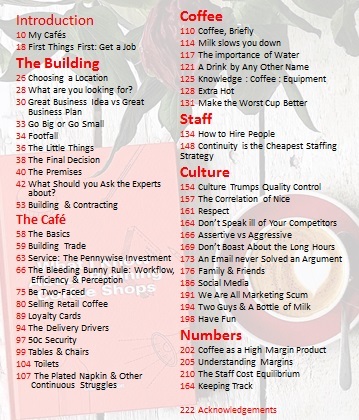 The Contents of ‘What I Know About Running Coffee Shops’ by Colin Harmon
The Contents of ‘What I Know About Running Coffee Shops’ by Colin Harmon Building Trade
The book discusses the difference between building a morning coffee trade versus growing a lunchtime trade.
An empty cafe in the morning is not how anyone imagines their coffee business but for a long time this could be your reality. It is important to step back and take a long-term view on it.
p59 Building Trade ‘What I know about Running Coffee Shops’ by Colin Harmon
The long term view is based on an understanding of your customer and their situation i.e. that morning commuters are not in the practice of taking risks.
The real issue here is that nobody goes for a wander on their way to work and few people are in the mood to take a risk. Most people that are on the way to work are two or three minutes late already and if they’re not, they’re either rushing or on a tight schedule that never changes. Ask yourself how often you decided that the way to work was the time to try out a new place? I certainly didn’t make a habit of it. …
Lunchtime however is a different game, because that is when people have time to play with and they’re more open to going somewhere new.
p60 Building Trade ‘What I know about Running Coffee Shops’ by Colin Harmon
The author continues to discuss the morning trade, and how it needs to be approached carefully.
On a weekday morning, it’s important not just to work fast in the morning, but also to appear to be working fast. People are kind of cranky in the morning and if they’re looking at you they probably need coffee too, which doesn’t help the situation. If you’re working till and you’ve taken an order, that doesn’t absolve you of all responsbility for that order, leaving it up to the barista to complete the job. The morning trade demands that everyone is trying to get the order out as soon as humanly possible, regardless of how quiet the shop may be, because you need to assume that your customer is late and dying for caffeine. ….
That customer coming back every day is what ultimately will drive your business, so in the early days of your cafe opening try not to worry about how many people are coming in but focus instead on who is coming back. If poeple are coming back, you’re on the right road.
p61 Building Trade ‘What I know about Running Coffee Shops’ by Colin Harmon
The point is well made that while morning customers are much harder to earn, once you have their trust they’ll more than likely come every single day. Lunch customers will do their own thing – so getting someone twice a week out of 5 days is doing very well. Customer motivation must also be understood in developing weekday versus weekend trade. My favourite three pages of the book (pages 74 to 76) also reveal great customer understanding.
The Bleeding Bunny Rule: Workflow, Efficiency & Perception
This book does a great job of explaining what ‘efficiency and workflow’ mean in practice.
A small cafe or espresso bar requires two people to work it at a very minimum because otherwise staff won’t feel safe at work, be able to take a lunch break or visit the bathroom, and yet you’ll be surprised how many businesses exist with only one staff member. When you open a small cafe, build it so you start with two people and if you can’t do that, don’t open it.
The question for most cafes is at what point does two people become three? And how can you know when that point is approaching.
p67 The Bleeding Bunny Rule: Workflow, Efficiency & Perception ‘What I know about Running Coffee Shops’ by Colin Harmon
The answer is definitively discussed in the book – the number of tasks you do at once rather than how long it takes to do any particular task is the key to understanding your staff to turnover ratio – faster service, lower staff costs, better and more pleasant working environment. The point is made that an organised bar not only works faster but also gives you a huge advantage in terms of customer service. Which brings us to the ‘Bleeding Bunny’
People often overlook something very important about calm, controlled and efficient workflow and that’s the perception that your customers develop of your business.
There’s a rule that I like to call the ‘Bleeding Bunny Rule’, which is based on the logic that the more distressed your appear, the more likely you ae to be criticised by your customers. Bleeding bunnies will always be preyed upon before their more able-bodied comrades. ….
One simple thing that can greatly affect the perceived waiting time that a customer experiences is the sound of your voice. We encourage staff to confirm a customer’s order with them when they’re waiting for their coffee after ordering. At busy times there’s often five or six customers waiting, so when you have a docket list that reads: two cappuccionos, one filter coffee, one espresso, you should look to the first in line and ask, ‘Yours is two cappuccinos, right?”
Now, we’re 100% certain your order is two cappuccionos. The reason we ask is because it breaks the silence and makes your wait seem much shorter. It also alleviates the fear that there’s been a mistake, a constant fear at rush hour.Another thing to do is to give customers strangely specific wait times. In a busy queue, I’d often go down the line with the first three customers telling them:
1st Customer: “I have yours here.”2nd Customer: “Yours is a cappuccino?”
3rd Customer: “Yours is going to be about 70 seconds.”
Telling the third person in line that their drink will be 70 seconds seems random but it serves a specific purpose. Firstly, those in front of them know their drink is due before that and those after that know theirs can’t be far long behind. Secondly, it sounds like more of a promise than “a minute” or “two minutes”. both of which are euphemisms for anything from 30 seconds to 10 minutes. Thirdly, it’s a bit of fun for customers.
p74 The Bleeding Bunny Rule: Workflow, Efficiency & Perception ‘What I know about Running Coffee Shops’ by Colin Harmon
Serving your favourite customer – two different types of coffee customer
I don’t drink coffee. But I can appreciate the point that there are two types (or a continuum) of coffee drinkers. The author refers to the first as Ms. A. She comes in at the same time, on the same days and orders the same drink.
She pays for her coffee, sits on the bench while she waits then as soon as her order is called she’s up and gone with no amount of fuss. She’s one of our favourite customers.
Another one of our customer comes once every two weeks, and has been doing so for almost five years now. He has a particular propensity towards washed Ethiopian coffeees, particularly Yirgacheffes, and so over the years he’s earned the name Yirgacheffe Man. He has no idea we call him that. .. He’s quite reserved, but he always makes time to ask questions about the coffee he’s drinking and will usually ask how they compared to his beloved Yirgacheffee in terms of sweetness, body and acidity. He is another of our favourite customers.
p75 Be Two-Faced, ‘What I know about Running Coffee Shops’ by Colin Harmon
The author explains that the key for them has always been to distinguish between these two customers and figure out what they want in terms of service when they come to the cafe. There is no point waxing lyrical about the coffee to someone who just wants a drink, and equally a lack of engagement by staff with a coffee enthusiast is a lost opportunity.
It can be hard to guage which type of customer you’re dealing with. Some people are shy and might be afraid to ask whereas others might appear interested but are just being polite. A handy tool that we implemented at our shop was to have two menues: a drinking menu and a tasting menu.
p78 Be Two-Faced, ‘What I know about Running Coffee Shops’ by Colin Harmon
Loyalty Cards = Big Discount
I came across the book in 2019 as I was looking for some information on coffee margins as I was undertaking a feasibility study for a client on setting up a Cafe at a particular location in County Tipperary. I found a great article in the Irish Times about the impact of the VAT change in Ireland on the price of a cuppa, which featured a quote from Colin Harmon with a reference to his book. The article included this superb graphic – I find the finances of coffee very interesting.
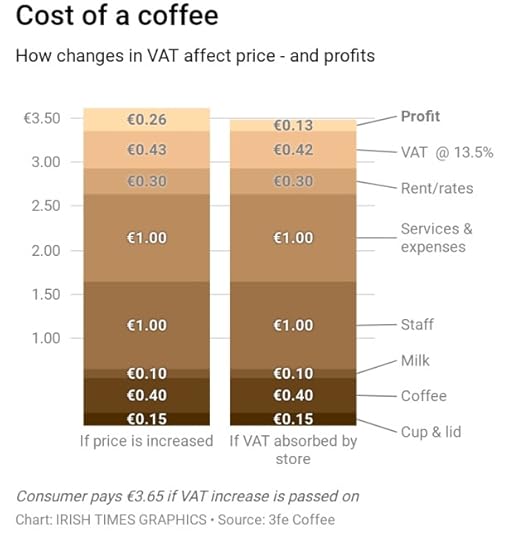
The finances behind loyalty cards are also very interesting as explained in the book. 3fe have never had loyalty cards – where you get a stamp for every coffee you buy and when you get ten stamps you get a free coffee. The book breaks down how a Cafe serving 300 cups of coffee at €3.50 including VAT would need to sell 16% more cups, increasing to 347 per day, in order to stand still on gross profit, if a loyalty card was introduced with an effective 10% discount per cup of coffee. The author’s key point, p.93, is that while loyalty cards do encourage people to return to your shop, you need to have a fuller understanding of the cost of the scheme.
Positive Staff Management
The author states it is very difficult to be successful in the hospitality industry – and doing it without any experience is next to impossible
“If you open your own place, you’ll more than likely not be earning money from the business for a period whilst facing the learning curve of running a business. You can hire people that know the industry but if you have a small budget to work with, it’s a lot more difficult than it seems. Finding people who will be as passionate about your business as you are will be incredibly difficult. If you have the experience and skill set yourself, it’s easier to train, motivate and work with your prospective staff.
p.21 ‘What I know about Running Coffee Shops’ by Colin Harmon
The book is written in the first person with great honesty, self-awareness and reflection. The author devotes a lot of attention to the topic of building a team to include discussion of how to get the hiring process right, creating a culture and ensuring low staff turnover. There is a very interesting section entitled, ‘Aggressive vs. Assertive’ where he writes…
I hired my first staff member after about three months and I lay awake at night wondering how I was going to be somebody’s boss. It took me that long to hire someone not because i wasn’t busy enough but because I was so petrified of the idea of it. ……
We’ve all had experience with aggressive people in the workplace or even just in our everyday lives, and, in all honesty, their aggression may result in some short-term gains for them. What happens over time, however, is that you start to take little notice when they lose the rag because they’re always doing it and it stops having any affect on you. More importantly, you start to lose motivation to work for that person, and in the cafe business this is one of the biggest causes of staff turnover. People have better things to do than to be roared at every day and so they move on. What I learned over the years is that being assertive is a much better way to make people react and you can be serious without losing their respect…….
The most important part of assertiveness is not just remaining calm however, but also saying what you think. Exactly what you think. It’s amazing how many people will skirt around an issue without realising that they’re only hindering their own chances of resolving the problem.
p166 Asssertive vs. Aggressive ‘What I know about Running Coffee Shops’ by Colin Harmon
About Colin Harmon
I don’t know and have never met Mr Harmon but he seems like a really nice person – this is a great interview when he launched the book in which he also talks about the process of writing the book.
To buy the Book
I got it from Santa who I am sure got it direct from the website devoted to the book, ‘What I know about Running Coffee Shops‘. It includes a preview of 12 different pages of the book to give a nice sense of the style. It is also available for the Kindle. Hope you like this article, as always, comments and social shares welcomed and appreciated.
Related PostsChristmas Message 2017 – Scratch Animation (Dec 22, 2017)
My christmas message 2017 was inspired by the kids summer camp when they learned scratch - this is ...
Congrats to Galway’s next wave of Super Food and Drink Entrepreneurs (Dec 10, 2017)
I recently attended the Galway Chamber Business Awards. Pat McDonagh, Founder of Supermacs ...
What ‘grants’ and other supports apply to my startup business? (Jul 21, 2017)
If you have ever wondered what supports that you and your startup business could and should apply ...
Galway’s Startup Scene : 2017 Snapshot (Jan 8, 2017)
In late 2016, Startupblink contacted me to write a 'Startup Ecosystem article' on ...
Dealing with difficult clients as a Freelance Consultant (Dec 6, 2016)
I was asked recently as part of a Q&A to discuss how I deal with 'difficult clients' or ...
The post ‘What I know about Running Coffee Shops’ – a brilliant book by Colin Harmon appeared first on Donncha Hughes, Business Trainer, Advisor & Mentor. Thanks for signing up to my feed regards donncha p.s why not also check out my other website www.startupwebtraining.com
February 2, 2020
What Enterprise Ireland are looking for in a New Frontiers Phase 2 Application in 2021?
Are you participating on one of the Enterprise Ireland New Frontiers Phase 1 programmes being delivered by the Incubation Centres in the Institutes of Technology in Ireland? If yes, you may have started completing your Phase 2 application form (download pdf) As a trainer over the years on the programmes in WIT, IT Sligo &...
The post What Enterprise Ireland are looking for in a New Frontiers Phase 2 Application in 2021? appeared first on Donncha Hughes, Business Trainer, Advisor & Mentor. Thanks for signing up to my feed regards donncha p.s why not also check out my other website www.startupwebtraining.com
What Enterprise Ireland are looking for in a New Frontiers Phase 2 Application in 2020?
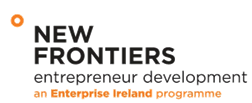 Are you participating on one of the Enterprise Ireland New Frontiers Phase 1 programmes being delivered by the Incubation Centres in the Institutes of Technology in Ireland? If yes, you may have started completing your Phase 2 application form … click here to download
Are you participating on one of the Enterprise Ireland New Frontiers Phase 1 programmes being delivered by the Incubation Centres in the Institutes of Technology in Ireland? If yes, you may have started completing your Phase 2 application form … click here to download
GMIT New Frontiers Application 2019 pdf . As a trainer over the years on the programmes in WIT, IT Sligo & Letterkenny, IT Tralee, TU Dublin, DKIT and GMIT, I would like to share some thoughts on what I think Enterprise Ireland are looking for in a New Frontiers Phase 2 participant /business. Originally published in 2013, this article has been updated and revised in 2020.
Potential Scalability
Enterprise Ireland funds and co-ordinates the €4.2m New Frontiers programme, the aim of which is to spawn new companies that will be eligible for Enterprise Ireland’s high-potential start-up (HPSU) supports
Silicon Republic, May 2012
Enterprise Ireland has a fantastic track record of supporting HPSUs (High Potential Startup Companies). New Frontiers is an investment in creating a pipeline of potential HPSUs across all regions in Ireland. The ability potential to create jobs in Ireland is the number one requirement. These Value Creation and Value Realisation equations presented below, as espoused by Tony O’Kelly, New Frontiers Programme Manager in GMIT, will assist us to drill down to see how this ‘potential‘ is assessed at an early stage.
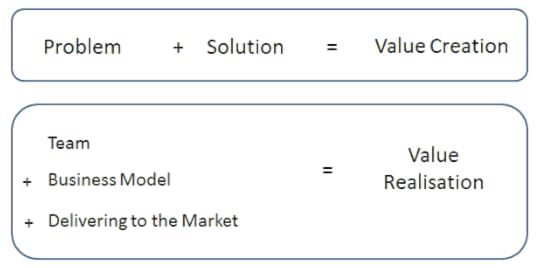 #1. Addressing a Problem Worth Solving
#1. Addressing a Problem Worth Solving
most startups fail not because they don’t manage to develop and deliver a product to the market; they fail because they develop and deliver a product that no customers want or need.
Steve Gary Blank – The Four Steps to the Epiphany: Successful Strategies for Products that Win
The very first issue for every early stage startup is to identify ‘a burning problem’ for a specified customer segment. In Running Lean, Ash Maurya presents the three stages of a startup.
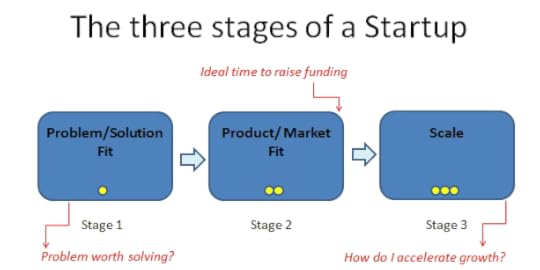 Source: Adapted from Figure 1.3 Page of Ash Maurya’s Running Lean on page 8
Source: Adapted from Figure 1.3 Page of Ash Maurya’s Running Lean on page 8
I suggest that applicants to New Frontiers Phase 2 should focus on showcasing in their application that they have achieved Problem/Solution fit.
You need to ‘get out of the building’ and talk to potential customers. You need to figure out if potential customers and end users have a problem worth solving – will they pay for your solution and are they already paying for some solution. Is this a ‘must have’ rather than a ‘nice to have’ offering. The key at the early stage is to ask customers to identify the problems that they are experiencing rather than to ask them what they think the solution should be or entail.
#2. A viable solution
My background is Marketing. I have met with lots of startups so I have a working knowledge of technology. In 99% of cases, if there is a problem, a team of scientists or engineers or other experts can find the solution given sufficient resources. I suggest that applicants to Phase 2 should focus on proving in their application that they have the wherewithal to develop a viable solution (as opposed to creating a demo). They will also need to highlight how this solution can be protected and not easily copied (Intellectual Property is a huge advantage). It is also important to explain the technology without too much jargon. One way to do this is to outline a Use Case Scenario for a typical customer.
#3. Market Niche
The first two elements of Tony’s formula: Problem and Solution combine to create Value for a Specified Target Customer Segment.The easiest way for New Frontiers Phase 2 Applicants to demonstrate that they have identified a market niche is to cite relationships with Reference Customers, whether they be in business (B2B) or consumer (B2C) markets.Secondary research outlining market size, trends and major competitors will complete the picture. The ideal scenario is a growing market or sub-market where customers and third parties value innovation as opposed to focusing exclusively on cost.
The value that you create for your customer can take many forms. For B2B, the easiest value to communicate is when your solution leads to increased Sales, or results in cost (also measured in time) savings. For B2C, value results from a gain of something positive or a reduction in something negative. But there is no need to focus exclusively on ‘logical’ value or serious problems. There is a difference between what people ‘need’ and what they ‘want’. Businesses may feel that they need to prove that a valid need is being served. I agree with this sentiment, but would add that if you can find and access a cohort of customers with similar interests and worldviews, and can deliver on an unserviced ‘want’ in less serious domains, then there could be the basis of a sustainable business.
The key issue in the Value Creation equation is the level of pain experienced by customers. For your Phase 2 application, you will have to convince the EI panel that a Target Customer Niche is willing to pay for your solution (or iterations of it) – i.e. that their pain quotient is sufficiently high.
#4. Promoter & Team
Jim Collins in his book ‘Good to Great‘ emphasised the requirement to ‘Get the right people on the bus’. Each New Frontiers Phase 2 application will be assessed to see if the team has the mix of skills required to bring the business to the next level. Domain knowledge, technical and commercial experience and expertise will be assessed. A strong application will outline milestones that have been achieved to date as testament of the value of the current team. It is also important to identify gaps in the team and ideally how and when these will be addressed. At an early stage, start up promoters need to leverage the value of the ‘Non-traditional team’ to include mentors and experienced business advisors and professionals.
#5. Business Model
A business model describes the rationale of how an organization creates, delivers, and captures economic value…… The business model canvas is a shared language for describing, visualising, assessing and changing business models.
Business Model Generation, Osterwalder and Pigneur
A Business Model defines how a business makes money. But, it is about more than Pricing and Routes to Market. The Business Model Canvas facilitates the presentation of your business on one page by challenging you to think about 9 building blocks of every Business Model. The business model generation book uses brilliant examples to outline business model patterns and also provides techniques for creating a business model for your business.
Ash Maurya was inspired by this work to create the Lean Canvas – in this blogpost he explains why he replaced 3 of the 9 original building blocks for his canvas. The value of whichever Canvas you choose is the ability to capture the same core elements you find on a business plan, but because it fits on one page, it’s a lot more concise, portable and readable.
I highly recommend every startup to use (for free) the Leanstack.com tool. There are super step by step instructions to include videos by Ash Maurya on how to complete a canvas for your business.
#6. Focused Plan of Action
The Enterprise Ireland panel will be assessing both technical and commercial milestones in each application.
All startups are experiments – they must be in order to create something worth building. Completing a Canvas is the first step in creating a roadmap for your business. It will challenge you to ask the hard questions of your business and allow your team to sharpen its focus on what really matters. The Running Lean methodology, building on the principles outlined by Eric Ries in The Lean Startup, requires that promoters:
• First find a problem worth solving, before defining a solution
• Find early customers
• Test pricing
• Decide what goes into Release 1.0
• Build and measure what customers want
• Iterate
• Achieve product/market fit
where product/ market fit is achieved when a product solution shows strong demand by passionate users representing a sizable market.
Early Stage Business Case:
New Frontiers is designed to assist male and female entrepreneurs, who have an innovative business idea and the ambition to create a growth focused business. As a promoter your job is to submit a strong application form for Phase 2 of New Frontiers – one that presents the Early Stage Business Case (13 factors).
1. A clear and concise description of the Technology based product or service to be developed
2. Attractive market opportunity – size, trends etc
3. A clear pain statement as to why customers will purchase the solution – differentiation (sustainable competitive advantage)
4. Promoter demonstrated relevant qualifications, experience and domain knowledge (and that they will benefit from the Phase 2 programme)
5. Team members with relevant skills and expertise matched to clear team roles
6. Team has startup and business development expertise and track record
7. Market opportunity supported by Market Research – target markets identified and explored
8.Comprehensive Competitor Analysis
9.International potential (indicative route to market/ ambition)
10.Clearly defined business model including revenue model
11.Strategic Reference Customers
12.Milestones to date indicative of business momentum
13.Credible, achievable and challenging action plan. Proposed implementation based on evidence of past performance and achievements to date? What level of growth is anticipated in relation to turnover, employment potential etc (indicative or summary financials as opposed to detailed financial projections)
Final Point(s):
In New Frontiers, Enterprise Ireland and the IoTs have a proven model to assist startups. The progress of participant businesses over its tenure is testament to its success. As such, I highly recommend New Frontiers to startup promoters with businesses that fit the criteria.
Phase 1 is competitive. To secure a place on Phase 2, your application will have to:
Communicate the core value offered by your business to a sizable customer segment; and
Present a roadmap with realistic commercial and technical milestones in order to realise the potential of the business.
EI has not published their Weighted Selection Criteria for New Frontiers. Last year in Galway at a Pitch meetup which I facilitate, a group comprising of New Frontiers GMIT alumni and applicants who had just completed Phase 1 discussed this very issue and created this graphic – this is not endorsed by Enterprise Ireland but do you agree?
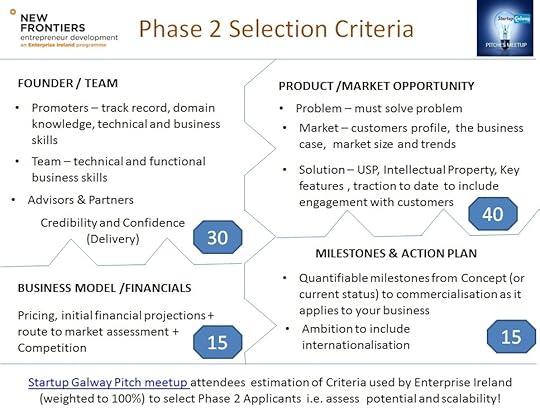 If you get called to Phase 2 Interview stage, I think that this will inform how much time should be spent on addressing and communicating the many elements of your business.
If you get called to Phase 2 Interview stage, I think that this will inform how much time should be spent on addressing and communicating the many elements of your business.
I hope that you find this blogpost of benefit when completing your Phase 2 application. All comments welcome.
regards
Donncha
@donnchadhh
p.s In April 2018, I added a new online workshop called ‘New Frontiers Phase II Application Form’ . The programme was updated to reflect the changes to the Phase 2 form in 2019. It is one hour of videos which dissect the Phase 2 Application form – available for €50 for one year’s access – free preview when you create a Thinkific account – here is the introductory video (11 minutes – compressed):
http://www.startuphughes.com/wp-content/uploads/2019/03/Video-2-for-Intro-New-Frontiers-Phase-2-Application-form.mp4
Related PostsBusiness Model Canvas for Social Enterprise (Mar 15, 2016)
As I explained in this LinkedIn Pulse article entitled "Inspiring: Social Enterprise in Galway ...
CSF Masterclass + Articles about CSF for InspiredStartups.com (Jan 22, 2016)
Click EventBrite Button above to book to attend the FREE CSF Masterclass on Thursday 1st March 2018 ...
Two hour Negotiations Workshop, DCU Invent, 10th November (Nov 5, 2015)
Donncha provides two hour, half day and full day Negotiations Workshops. Please contact to discuss ...
Ten things we probably knew and were reminded of during Startup Gathering Galway 2015 (Oct 14, 2015)
9th October Galway
Last Friday (9th October 2015) was spent meeting new business acquaintances ...
[Book Review] Disciplined Entrepreneurship : 24 Steps to a Successful Startup by Bill Aulet (2013) (Jul 13, 2015)
I have just finished reading Disciplined Entrepreneurship by Bill Aulet, Managing Director, ...
The post What Enterprise Ireland are looking for in a New Frontiers Phase 2 Application in 2020? appeared first on Donncha Hughes, Business Trainer, Advisor & Mentor. Thanks for signing up to my feed regards donncha p.s why not also check out my other website www.startupwebtraining.com
January 23, 2020
‘Writing your Business Plan’ Online Training Programme now Live
I am delighted to announce that my latest online training programme, ‘Writing Your Business Plan’ is now live. To publish this online training was an early goal for 2020 as it was on my ‘to do list’ for a while as I regularly deliver one day workshops on preparing business plans for New Frontiers, IBYE and other startup programmes.
‘Writing Your Business Plan’ Online Programme
I am very happy with the programme as it is concise but comprehensive:
2.5 hours of video to break down each section of the business plan.
Format for Writing the Executive Summary
A business plan template based on Business Cube by InterTrade Ireland
Template for 2 page Investor Brief
Advice on writing the document and crafting the message
An example business plan for a ficticious business called TLC Dog Grooming
Here is the 2 minute promotional video outlining what is addressed in the online programme.
https://www.startuphughes.com/wp-content/uploads/2020/01/Promo-Writing-a-Business-Plan-online-programme-2.mp4
Writing your Business Plan Online Programme by Donncha Hughes – Preview before you Buy
Related PostsFinance for Startups : Part I (Mar 4, 2014)
I believe that knowledge of finance to include: an ability to understand and communicate your ...
How to make your business plan or tender document look professional? (Feb 6, 2014)
I write several business plans for clients every year and I also regularly create tender documents ...
How to present data in a visual format? (Jul 8, 2013)
Bullet charts are a superb data visualisation tool - if you want to present results of a metric ...
How to write a business plan that won’t gather dust? (Oct 19, 2011)
I was talking recently during a Start Your Own Business programme about the value of business ...
Ten challenges to help your business plan succeed (Sep 9, 2011)
I volunteered to speak at BizCamp Galway tomorrow (Saturday 10th September) on the topic of 'Ten ...
The post ‘Writing your Business Plan’ Online Training Programme now Live appeared first on Donncha Hughes, Business Trainer, Advisor & Mentor. Thanks for signing up to my feed regards donncha p.s why not also check out my other website www.startupwebtraining.com
September 18, 2019
Business Cube updated by InterTrade Ireland – SeedCorn Competition 2019
I have said for years that the best investor ready business plan preparation guide is the Business Cube Methodology published by InterTrade Ireland the organisors of the SeedCorn Investor Readiness Competition. So I was delighted to see that a modernised edition, now referred to as Business Cube, has been published in 2019. It is a free guide and I trust that SeedCorn won’t mind that I am making it available to download here.
Download InterTrade Ireland’s Business Cube – Updated 2019
A business planning tool – Business Cube
The Business Cube lists 9 factors starting with Customers & Market Opportunity throught to financial plan and funding (see list below) with each one evolving within 6 stages of the business startup journey from concept to feasibilty to market launch and growth. It is at this final (orange) stage referred to as ‘Realise Value & Learn’ that seed VCs investors in Ireland will take an interest – what Lean Startup would refer to as ‘Product-Market’ fit.
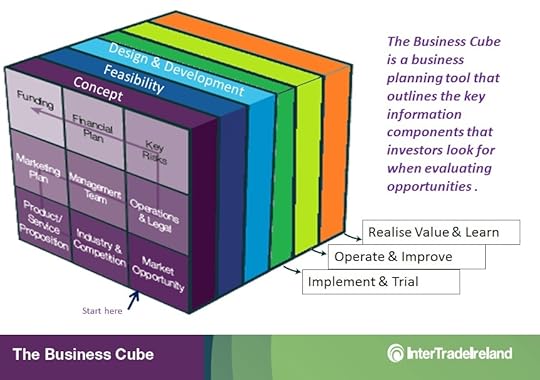
1. Customers, Market Opportunity & Traction
2. Product or Service Proposition
3. Industry & Competition
4. Strategic Fit, Business Model & Marketing Plan to include Route to Market
5. Management Team, Key Hires & Advisors
6. Financials & Funding
7. Operations & Legal to include Intellectual Property
8. Risks & Constraints
9. Financial Plan & Funding (Investment Required, Use of Funds & Exit Strategy) – Implementation
The Business Cube emphasises that business plans are to be updated as part of the business planning process with a focus on demonstrating to investors that business results can be achieved – customer, products, market, marketing, building a team and achieving appropriate financial metrics. The headings above form the generic template for a business plan.
Seedcorn Business Plan Pointers
Having had the priviledge of being involved with SeedCorn for the last 3 years, and having written a few business plans in my time, here are 6 key tips for making the Regional shortlist in 2020…
A. Get the story and business message across
The story or message of the business is that there is an identified problem and that a brilliant solution has been developed with a defined beach head customer base. It is important to show traction by listing strategic customers very early in the plan.
B. Present the case for investment
The financial forecasts are a critical part of the plan. Consideration should be given as to how each piece of information in the plan affects
the plausibility of the forecasts. p.4 Business Cube.
The company must clearly state how much investment is required and what the funds will be spent on. Comprehensive financial projections need to be presented being 3 year cashflow, P&L and Balance Sheets and ideally target revenue in 5 and 10 years with a concise summary in the Executive Summary. The metrics need to be right i.e. the business must show a need for the investment and also a growth trajectory such that the investment provides a solid return in the form of net profit margins.
C. Quantify the market
Secondary research must support the story outlined in the business plan. The market opportunity must be properly quantified by reference to research reports such as those by Frost & Sullivan or Gartner. Many business plans feature DIY calculations of the value of a market based on potential customer numbers by price of the good or service. Personally I reject this methodology as it doesn’t quantify true demand. Another trap is to list Facts and figures that may sound good but again are not evidence of demand. At the same time idnetifying trends is important as they can answer the important question of ‘why now?’ for the investor.
D. Route to Market
Presenting a strong route to market is a great sign of traction. Make sure the financials work for these partners. This will frame the Marketing plan which will form basis of a customer acquistion strategy – always great to show a strong sales pipeline as it reduces the risk for investors.
E. Team
A strong team with functional, technical and interpersonal skills is required with strong domain knowledge and experience. It is important to list Advisors and have a plan for recruitment as the business grows. Outsourced partners who provide key resources are important elements of the team.
F. Exit Strategy
An Exit Strategy is an important element of a business plan for investors to signify the commitment of the promoters to ensuring that a return is generated on the investment.
Overall, the reader is looking for a consistency and logic between each section of the business plan and particularly that everything fits within the numbers. As the Busines Cubes states, ‘a considerable amount of information is required in a business plan‘ so it is important to balance the requirement to be concise with that of being comprehensive and persuasive.
Finally, it is easy to write a super business plan for a brilliant business so focus more on making a brilliant business than creating the perfect document – spend time with customers, working on the Techology or Secret Sauce of your business, building the right Team and making the financial model work. The business plan document can easily follow!
24 Seedcorn Regional Finalists 2019
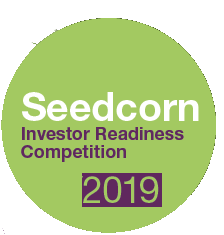
Congratulations to the businesses selected as Regional Finalists in 2019.
CONNACHT & LEINSTER – NEW START
CONNACHT & LEINSTER – EARLY STAGE
Trust Vet, Atlantic Photonic Solutions,
SealSpear
Venari Medical, FeelTect, NUA Medical
DUBLIN – NEW START
DUBLIN – EARLY STAGE
Thriftify, Organise Media,
My Live Medical
Senoptica Technologies, Head Diagnostics,
Output Sports
MUNSTER – NEW START
MUNSTER – EARLY STAGE
Micanotech, Ezi Vein, Miura RegTech
Pinpoint Innovations, AudioSourcRE,
Bilberry Innovations T/a Mobimetrix
NORTHERN IRELAND – NEW START
NORTHERN IRELAND – EARLY STAGE
Osteoblast, Trussbuddy, IIMAGene
Waterworx Robotics, Jetpack Learning,
Reynold Sports
Update November 2019 via Silicon Republic – Limerick start-up Tracworx wins top prize of €100,000 at Seedcorn 2019
As always I hope that you found this blogpost useful. Comments and social shares welcome.
Best regards
donncha (@donnchadhh on twitter)
p.s if you have a really excellent business and want a brilliantly written business plan because you need investment but don’t have the time or skills to write it yourself, feel free to send me an email to arrange a chat.
NEW FOR 2020 – Writing your Business Plan Online Training
 A 150 minute video based online training programme that shows you how to write your business plan. Includes a business plan template, sample business business plan, template for 2 page investor brief and videos which break down each section of the business plan. See full blogpost to watch the promo video and then check out the free preview.
A 150 minute video based online training programme that shows you how to write your business plan. Includes a business plan template, sample business business plan, template for 2 page investor brief and videos which break down each section of the business plan. See full blogpost to watch the promo video and then check out the free preview.
Related PostsA view of crowdfunding in Ireland (2014) (Apr 19, 2014)
I don't claim to be an expert on Crowdfunding but I am lucky enough to know Olive O'Connor, a ...
Please support MediStori’s Crowdfunding Campaign (Apr 7, 2014)
Today, I made a modest financial contribution as part of a Crowdfunding campaign to MediStori and I ...
Six key tips for tendering (Apr 30, 2011)
I was talking last week about what makes a good tender and how a start up company should approach ...
The post Business Cube updated by InterTrade Ireland – SeedCorn Competition 2019 appeared first on Donncha Hughes, Business Trainer, Advisor & Mentor. Thanks for signing up to my feed regards donncha p.s why not also check out my other website www.startupwebtraining.com
Business Cube updated by InterTrade Ireland – SeedCorn
I have said for years that the best investor ready business plan preparation guide was the Business Cube Methodology published by InterTrade Ireland the organisors of the SeedCorn Investor Readiness Competition. The concern was that it seemed a little out of date having being published in 2007. So I was delighted to see that a revised edited, now referred to as Business Cube, has been published in 2019. It is a free guide and I trust that SeedCorn won’t mind that I am making it available to download here.
Download the Guide to Self Employment in Ireland – Updated 2013
And just for the record here is the older version.
Why is it called Business Cube
Seedcorn Learnings
Get the story and message across. Show Traction
Present the investment case. The metrics need to be right. Present comprehensive financial projections
Read the section on Market opportunity on how to quantify the market.
Route to Market
Team
Risk Analysis
Exit Strategy
Related PostsAbout The Startup Business Planning Jigsaw (Feb 23, 2015)
Managing a startup business is NOT easy. Startup entrepreneurs have lots of balls in the air. Lean ...
Do HPSU’s deliver? Yes! (Aug 20, 2014)
I am often asked by startup entrepreneurs what makes a High Potential Startup Company or HPSU? as ...
How to address ‘Exit Strategy’ in your Business Plan? (Jul 31, 2014)
I am often asked what text should be included in an investor ready business plan under the section ...
A view of crowdfunding in Ireland (2014) (Apr 19, 2014)
I don't claim to be an expert on Crowdfunding but I am lucky enough to know Olive O'Connor, a ...
Please support MediStori’s Crowdfunding Campaign (Apr 7, 2014)
Today, I made a modest financial contribution as part of a Crowdfunding campaign to MediStori and I ...
The post Business Cube updated by InterTrade Ireland – SeedCorn appeared first on Donncha Hughes, Business Trainer, Advisor & Mentor. Thanks for signing up to my feed regards donncha p.s why not also check out my other website www.startupwebtraining.com
September 17, 2019
Congratulations IBYE 2019 Winners
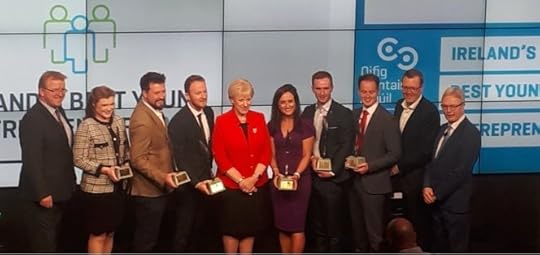
I was delighted to hear the results via Twitter on Sunday 15th September that
Sharon Cunningham of Shorla Pharma was selected as Ireland’s Best Young Entrepreneur having earlier scooped the National Winner in Best Start Up Business – TIPPERARY
Sean McGarry, ShowerGem was announed as National Winner of the Best Established Business – MAYO
Brendan Maloney of Skillko in Mayo was awarded the Runner Up prize in the Best Start Up Category – MAYO
because I had met all three earlier in the year. This was my first year being actively involved with IBYE – despite it being around since 2014 – as I had been asked by the brilliant Theresa Mulvihill of Smart Marketing to deliver workshops and mentoring in both Tipperary and Clare and then I was asked by LEO Mayo to meet with both Sean and Brendan before the West Regional finals. More pictures of the day can be found on Twitter from LEO Tipperary, LEO Mayo, IBYE and the video pitch by Sean McGarry is from the fantastic Breda Fox, CEO of Galway LEO.

Co founders of Shorla Pharma Sharon Cunningham and Orlaith Ryan accepting Ireland’s Best Young Entrepreneur 2019 Award from Minister Humphreys
I met Sharon to review her business plan as part of IBYE. It is an amazing business. I had very little feedback to give as they had already raised a multi-million investment – the technology/IP, business model and team were all brilliant.
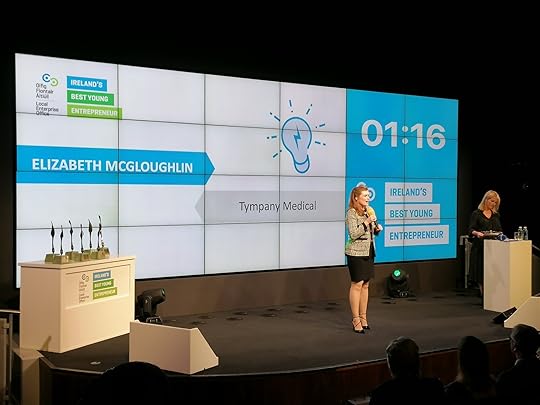
GALWAY – Tympany Medical, Runner Up in Best Idea Category
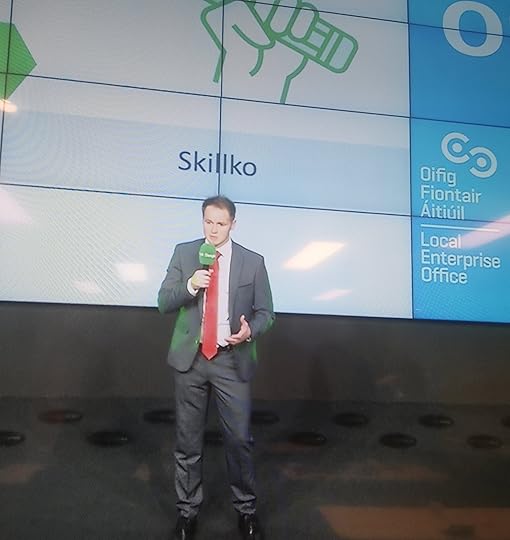
MAYO – Brendan Maloney, Skillko – Runner Up in Best Business Startup
I met Brendan to provide feedback on his business plan before the West Regional Final. I was totally impressed by the traction the business had garnered in a short time, the product seemed to be really brilliant and it really was resonating with customers. When I met him the second time a few weeks later, he was able to describe how securing each major customer was having a ripple effect with onboarding others in the value chain.
SEAN MCGARRY SHOWERGEM
I have known Sean for many years and am delighted to feature a testimonial from Sean on my homepage.
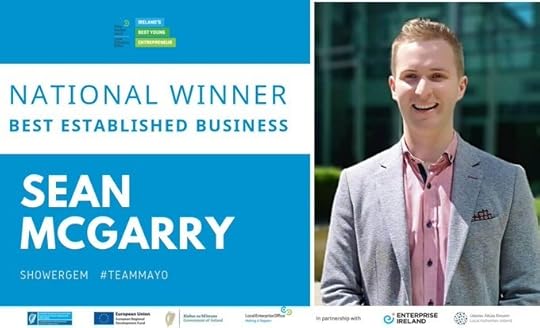
Sean McGarry IBYE ShowerGem National Winner Best Established Business 2019
The product ShowerGem is brilliant – see my review here.
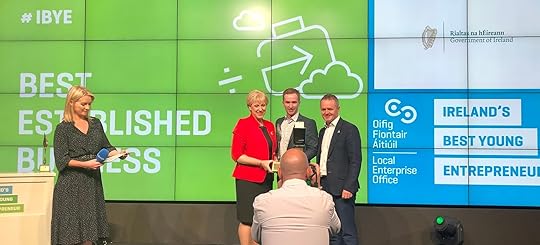
Sean has a brilliant entrepreneurship story one – with new chapters being added every day. This is a fantastic pitch –
Well done Sean @TheShowerGem great pitch to win #IBYE 2019 Best Establised Business category
Blog of Donncha Hughes
- Donncha Hughes's profile
- 4 followers


